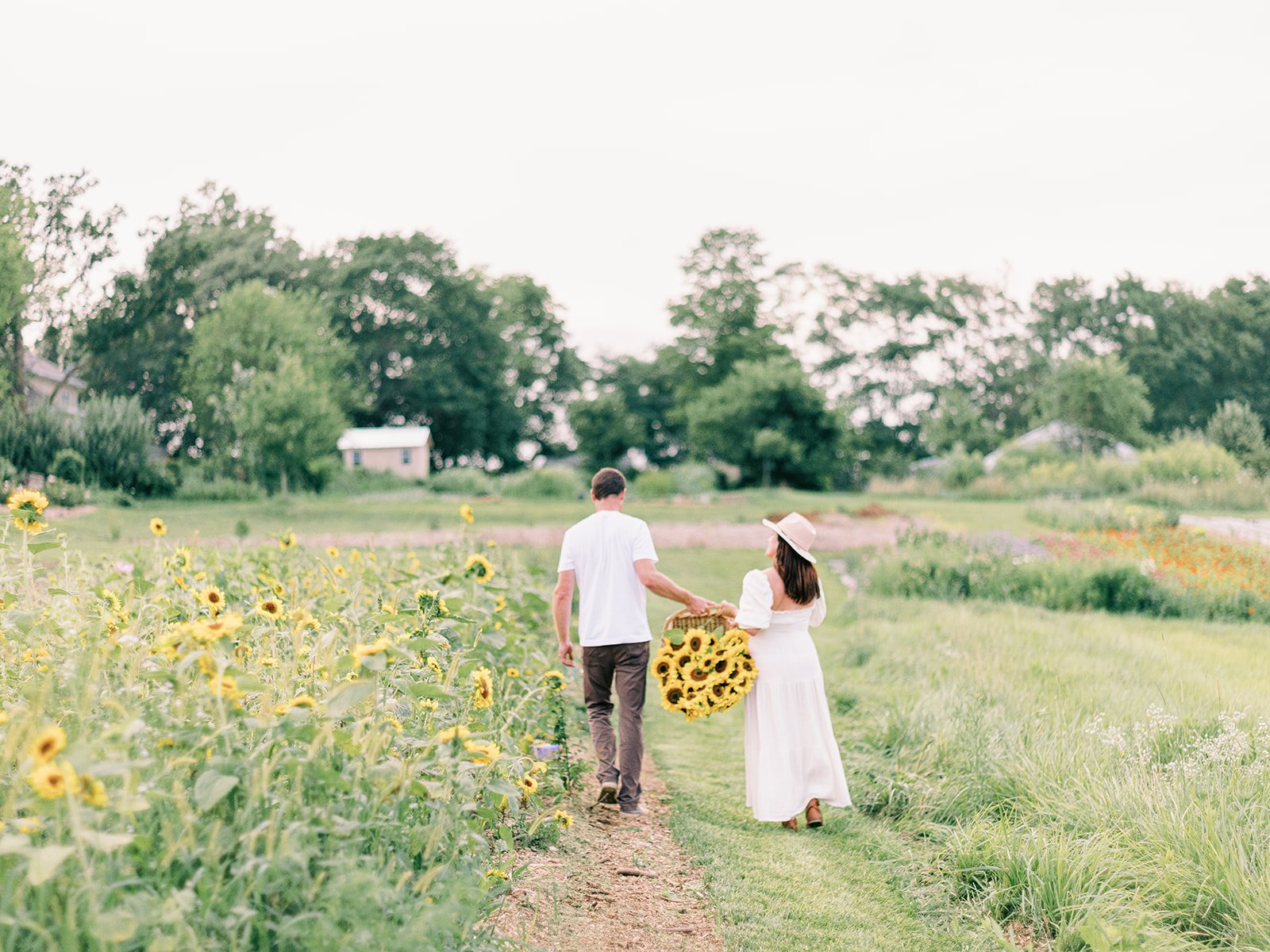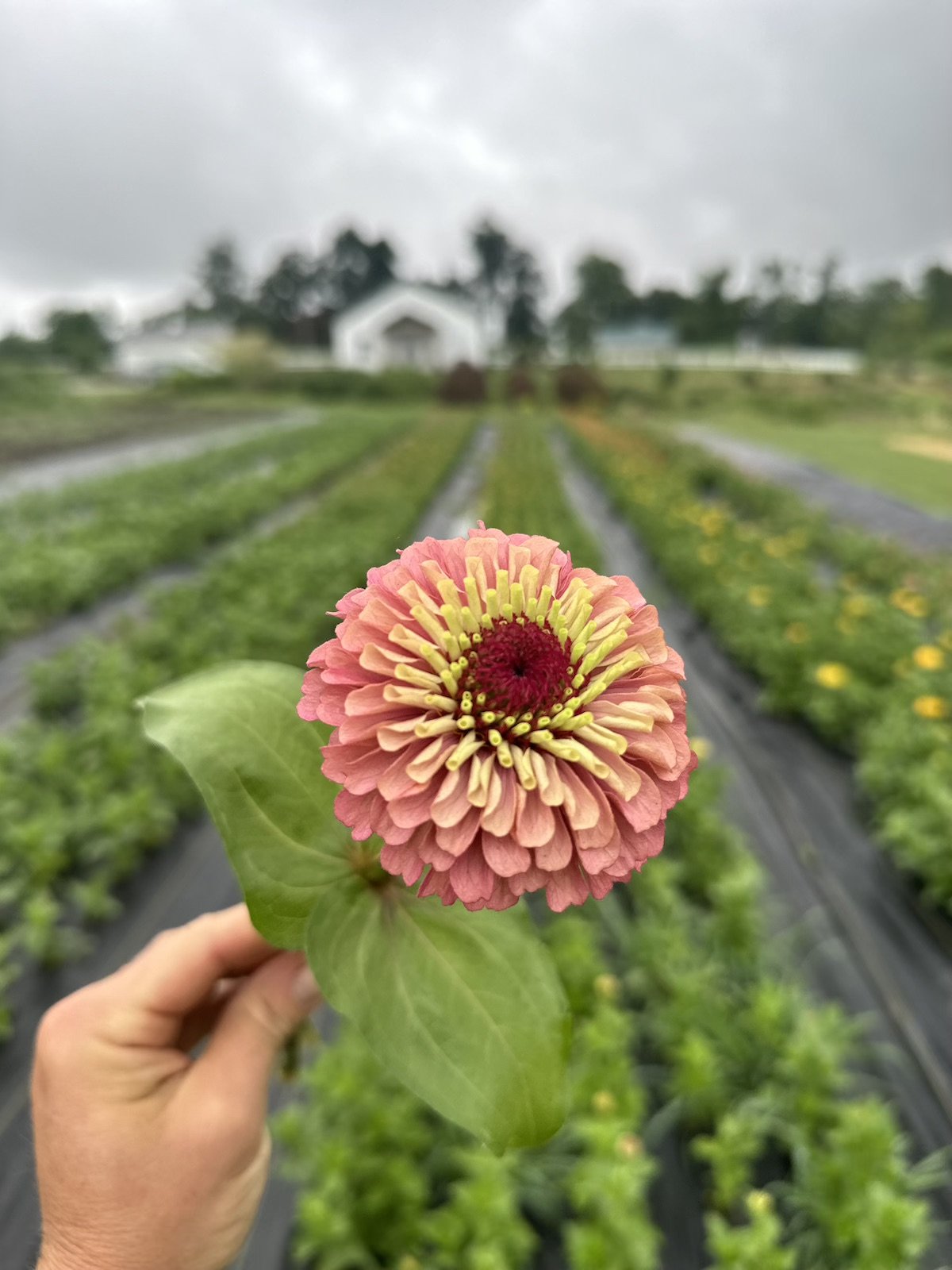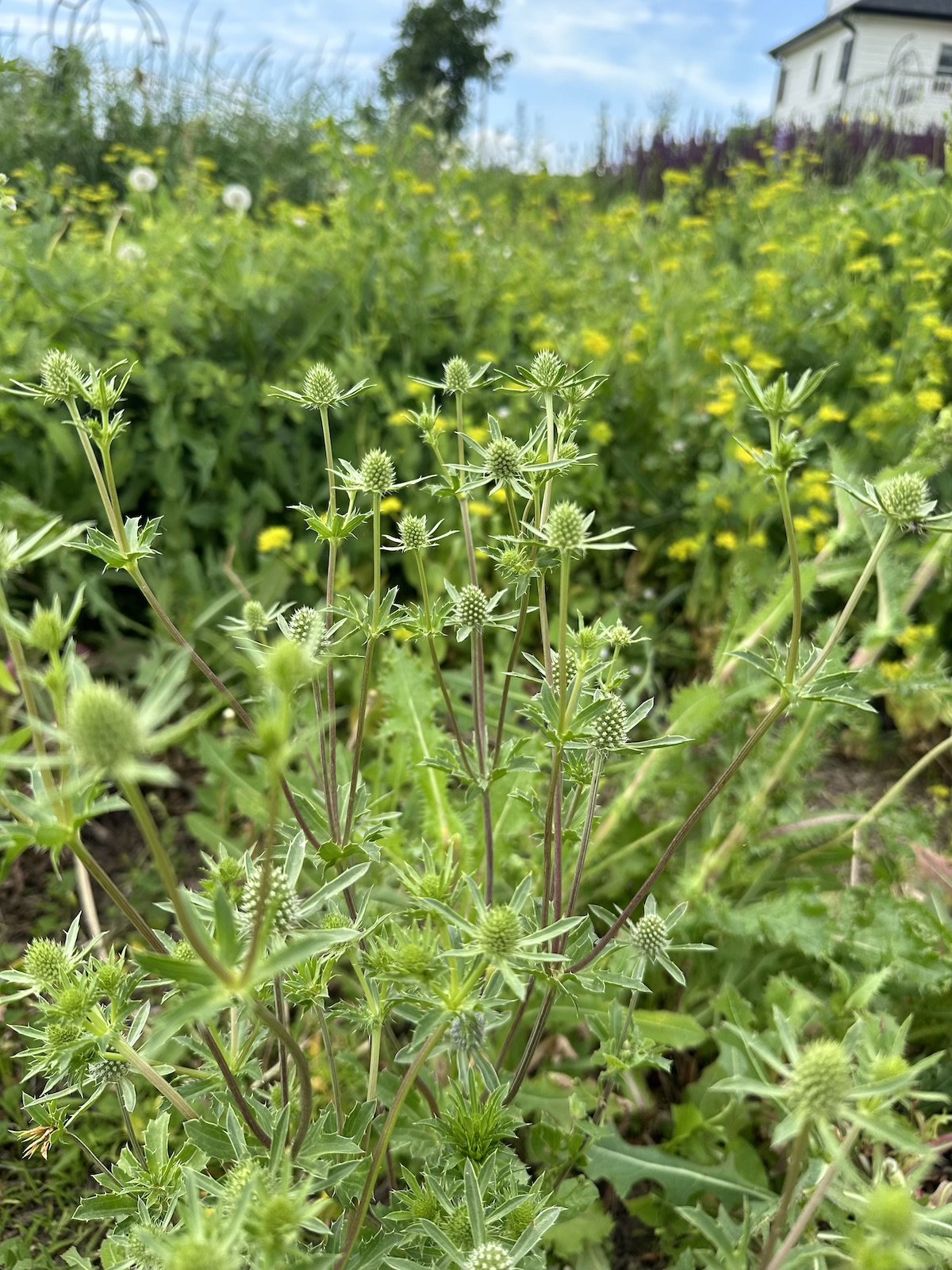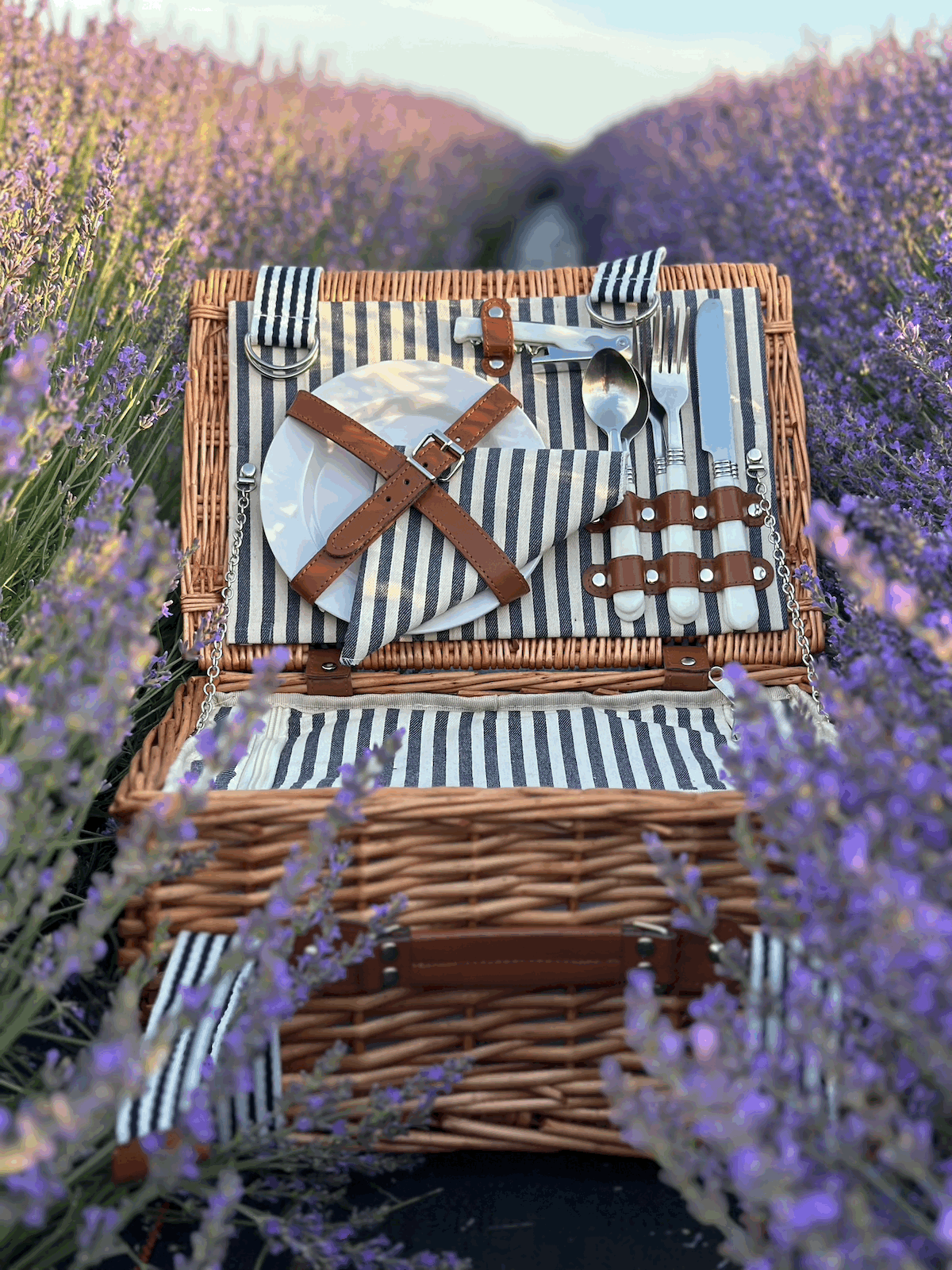
Fun New Zinnias to Try In The Garden
Deciding which flowers to grow in the garden can be challenging due to the vast array of stunning options. This year, we've chosen the remarkable 'Queen' series of zinnias for their unique charm and hardy nature, adding elegance and drama to our garden.
Queen Lime Red zinnias feature striking deep red and green petals with a fresh lime undertone, making them perfect for both traditional and contemporary designs. They stand out in mixed borders and cut flower arrangements.
Queen Lime Blush zinnias offer a delicate and romantic appeal with soft pink petals transitioning to a lime green center. Ideal for cottage gardens and wedding bouquets, they pair beautifully with other pastel blooms.
Queen Lime Orange zinnias infuse gardens with vibrant orange petals and a lime green center, attracting pollinators like butterflies and bees, creating lively and cheerful beds.
Queen Lime Peach zinnias bring understated beauty with soft peach petals accented by lime, adding vintage charm to various garden styles and sophisticated floral arrangements.
Growing Tips:
Plant in a sunny spot with well-draining soil.
Water regularly, keeping soil moist but not waterlogged.
Space plants 12-18 inches apart.
Remove spent flowers to encourage continuous blooming.
The Queen series zinnias—Queen Lime Red, Queen Lime Blush, Queen Lime Orange, and Queen Lime Peach—transform gardens with their stunning colors and forms, making them a favorite for gardeners of all levels.
When trying to decide what to grow in the garden, it’s so hard to choose flowers, because there are so many stunning flowers, but we’ve found that the unique charm of the ‘Queen’ series of zinnias is pretty remarkable and have selected them to grace our gardens this year.
Known for their unique color variations and hardy nature, these zinnias are a must-have for any garden enthusiast looking to add a touch of elegance and drama to their floral displays. Let's explore the unique varieties of the Queen series that we’re growing this year: Queen Lime Red, Queen Lime Blush, Queen Lime Orange, and Queen Lime Peach zinnias.
Queen Lime Red
The Queen Lime Red zinnia is a striking flower that demands attention. Its petals blend shades of deep red and green, creating a mesmerizing contrast that changes subtly with the light. The lime undertone provides a fresh and modern twist, making it a perfect choice for both traditional and contemporary garden designs. This zinnia stands out in mixed borders and makes a bold statement in cut flower arrangements, adding a pop of color and sophistication.
Queen Lime Blush
For those who prefer a softer palette, the Queen Lime Blush zinnia offers a delicate and romantic appeal. Its petals showcase a gentle blush of pink, subtly transitioning to a lime green center. This graceful flower evokes a sense of tranquility and elegance, making it ideal for cottage gardens and wedding bouquets. The Queen Lime Blush pairs beautifully with other pastel blooms, creating a harmonious and enchanting garden scene.
Queen Lime Orange
If you're looking to infuse your garden with warm and vibrant hues, the Queen Lime Orange zinnia is your go-to flower. This zinnia features a stunning blend of bright orange petals with a lime green center, exuding energy and vitality. It's a fantastic choice for creating lively and cheerful garden beds. The Queen Lime Orange zinnia also attracts pollinators, such as butterflies and bees, adding not just color but also life to your garden.
Queen Lime Peach
The Queen Lime Peach zinnia is the epitome of understated beauty. Its soft peach-colored petals, accented with hints of lime, bring a touch of vintage charm to any garden. This zinnia's subtle elegance makes it versatile for various garden styles, from rustic to formal. The Queen Lime Peach is especially delightful in floral arrangements, where its unique coloring adds depth and sophistication without overpowering other blooms.
Growing Tips for the Queen Series Zinnias
To enjoy the full splendor of the Queen series zinnias, follow these simple growing tips:
Location: Plant zinnias in a sunny spot where they can receive at least 6 hours of direct sunlight each day.
Soil: Use well-draining soil rich in organic matter. Zinnias thrive in slightly acidic to neutral soil (pH 5.5 to 7.5).
Watering: Water zinnias regularly, keeping the soil moist but not waterlogged. Avoid overhead watering to prevent leaf diseases.
Spacing: Space plants about 12-18 inches apart to ensure good air circulation and reduce the risk of fungal infections.
Deadheading: Remove spent flowers to encourage continuous blooming and maintain the plant's appearance.
The Queen series of zinnias—Queen Lime Red, Queen Lime Blush, Queen Lime Orange, and Queen Lime Peach—offers a stunning array of colors and forms that can transform any garden into an incredible display of unique color. These zinnias are not only beautiful but also easy to grow and care for, making them a favorite among gardeners of all levels. Whether you're creating a vibrant summer garden or designing a sophisticated floral arrangement, the Queen series zinnias are sure to add a regal touch to your efforts.
Five Varieties of Eryngium Perfect for Cut Flowers
Eryngium, or Sea Holly, is a unique, stunning addition to any floral arrangement. Known for its spiky, architectural form and long-lasting beauty, these details make it an especially good cut flower for bouquet making, or as a stand along flower. Here are five varieties of Eryngium that are great as cut flowers, each bringing unique textures and colors to your bouquets.
1. Eryngium planum (Blue Hobbit)
Characteristics:
Height: 2-3 feet
Bloom Time: Mid to late summer
Flower Color: Metallic blue
Eryngium planum features clusters of small, metallic blue flowers surrounded by spiky bracts. Its sturdy stems and striking color make it a favorite for cut flower arrangements. This variety adds an interesting texture and a pop of blue to bouquets and we also love to use them in fresh flower crowns.
Growing Tips:
Sunlight: Full sun
Soil: Well-drained, sandy soil
Water: Drought-tolerant once established
2. Eryngium giganteum (Miss Willmott's Ghost)
Eryngium giganteum is renowned for its tall, stately presence and ghostly silver-white flowers. The spiky bracts and stems are a beautiful addition to any arrangement, providing a striking contrast to more traditional blooms.
Characteristics:
Height: 3-4 feet
Bloom Time: Early to mid-summer
Flower Color: Silvery-white
Growing Tips:
Sunlight: Full sun
Soil: Well-drained soil
Water: Moderate watering, prefers slightly dry conditions
3. Eryngium zabelii (Big Blue)
Eryngium zabelii stands out with its deeply veined, silvery-blue leaves and vibrant blue flowers. This variety is compact, making it ideal for smaller arrangements or as an accent in larger bouquets.
Characteristics:
Height: 2-3 feet
Bloom Time: Early to mid summer
Flower Color: Blue with silvery veins
Growing Tips:
Sunlight: Full sun
Soil: Well-drained, rocky soil
Water: Drought-tolerant
4. Eryngium alpinum (Alpine Sea Holly)
Characteristics:
Height: 2-3 feet
Bloom Time: Mid to late summer
Flower Color: Blue with feathery bracts
Eryngium alpinum is known for its unique, feathery blue bracts that surround the central flower. Its delicate yet dramatic appearance makes it a stunning choice for floral arrangements, adding both texture and color.
Growing Tips:
Sunlight: Full sun
Soil: Well-drained, slightly alkaline soil
Water: Regular watering, but allow soil to dry out between waterings
5. Eryngium yuccifolium (Rattlesnake Master)
Eryngium yuccifolium features unique, greenish-white flowers and yucca-like foliage. Its tall, sturdy stems and unusual flower color make it a great addition to both fresh and dried arrangements, offering a touch of the exotic.
Characteristics:
Height: 3-4 feet
Bloom Time: Mid to late summer
Flower Color: Greenish-white
Growing Tips:
Sunlight: Full sun
Soil: Well-drained soil
Water: Moderate watering, drought-tolerant once established
Are you ready to start growing these beauties in your gardens?
We love all of these varieties of Eryngium and are so happy to share them with you! Not only do they thrive in the garden, but also make exceptional cut flowers, adding unique textures, colors, and shapes to any floral arrangement. Whether you prefer the metallic blues of Eryngium planum or the ghostly silvers of Eryngium giganteum, there's a Sea Holly variety that's perfect for your cutting garden.
Happy growing!
Plan Your Visit to PepperHarrow
Looking for a charming escape to a quaint town nestled in the heart of Iowa? Search no more! Pack your bags and hit the road (or take to the skies) for an enchanting getaway to our picturesque flower farm situated in Madison County, Iowa. Renowned for its scenic rolling hills, historic covered bridges, and as the birthplace of John Wayne, our county promises to be a relaxing, fun weekend getaway.
Guests often inquire about additional activities while visiting our farm, wondering, "What else is there to do?" The answer is simple: this Mayberry-esque community offers an abundance of delightful attractions and experiences that are sure to capture your heart. Today, we're excited to share a selection of recommendations to enhance your visit to our flower farm and explore all that our charming county has to offer.
Begin your road trip with delicious pastries and coffee at Petite Cafe, nestled in the heart of Winterset Square.
Or, take a short 20-minute drive to the nearby town of Earlham to visit Beans and Beignets for another delightful treat.
Both spots boast a delicious variety of pastries and coffee, complemented by excellent customer service.
While you're in Winterset, be sure to explore the shops on the square. From boutiques and art galleries to jewelers, restaurants, bars, and antique stores, the Winterset Square is a prime destination for shopping!
You can also head to RJ Home in Earlham, a vintage and handmade market open just one Friday, Saturday and Sunday a month. Check their website for when their next market will be held! You won’t want to miss it.
Next, book a private tour of PepperHarrow Farm! We'd be delighted to host you on our 20-acre property. Or, join in on one of our unique classes & events.
Surrounded by 8.5 acres of stunning flowers, relax and unwind amongst fields of lavender, annuals, perennial flowers, and wildflower areas, which support local pollinators.
Ready for dinner and drinks? Madison County offers a wide variety of options.
Check out local winery, Madison County Winery It’s a short drive from the town square. Be sure to check out their event calendars for live music and food truck events!
For delicious food and draft beers, head to The Drift and Urban on the Square, conveniently located on the Winterset Square. Both locations offer an expansive food menu with local beers and drinks.
Discover the natural beauty of Madison County by surrounding yourself in nature through Madison County Conservation Board’s parks.
Explore the excellent hiking trails at Pammel Park, just outside Winterset, and Goeldner Woods, a short drive south of Earlham.
Both locations feature well-maintained, dog-friendly trails and fantastic spots for picnicking.
Don't miss the iconic Covered Bridges of Madison County.
As the covered bridge capital of Iowa, Madison County boasts six picturesque bridges, with two accessible by paved roads.
Book a private tour of these historic landmarks here.
Finally, visit Winterset City Park, where you can explore the historic Clark's Tower with picturesque views of Madison County, the stone bridge, the Cutler-Donahoe Covered Bridge, as well as the brand-new, all-inclusive playground.
All are located within the park, which makes it a quick stop for some fun ways to explore.
Additionally, explore the rich history at the John Wayne Museum, which celebrates the life and legacy of the famous actor, and the Iowa Quilt Museum, showcasing exquisite quilt artistry and heritage.
For more inspiration, check out the latest issue of Midwest Living Magazine, which features a day’s itinerary to explore our beloved Madison County, with even more ideas for great places to visit!
DSM Magazine Feature
Catch Us in DSM Magazine!
We’re thrilled to be featured in the latest issue of DSM Magazine, highlighting the city’s top dining experiences.
Lavender Al Fresco Dinner
Join us for a multi-course, prix fixe dinner by Tangerine Food Co. Choose from June 21st, 2024, in two acres of lavender fields, or September 13th, 2024, among 12,000 blooming dahlias. Enjoy a private table surrounded by beautiful flora.
Lavender in Bloom Picnic
Experience a romantic picnic on June 22nd, 2024, from 5:00 PM to sunset. Relax in our stunning lavender fields with countryside views, perfect for strolling, photos, or napping.
Explore More Events
Check out the feature article and discover more exciting events happening at the farm throughout Spring, Summer, and Fall.
Did you catch our feature in the latest issue of DSM Magazine? We are ecstatic to be highlighted among the city's finest establishments, all offering unique and unforgettable dining experiences. Check it out and join us in celebrating this exciting moment!
Our Lavender Al Fresco Dinner was a highlight, boasting two multi-course, prix fixe al fresco dinners from the team at Tangerine Food Co. Our guests can choose either date or both: June 21st, 2024, among two acres of fragrant lavender fields or September 13th, 2024, among 12,000 dahlias in full bloom. You’ll have a table to yourself surrounded by the flora of your choice.
Our Lavender in Bloom Picnic on June 22nd, 2024, from 5:00pm - sunset was also featured.
Enjoy a romantic evening with a picnic for two set on our gorgeous farm. Enjoy the gorgeous countryside views, beauty and fragrance of our expansive lavender fields. Stroll, take photos or a nap in our little slice of lavender heaven. It’s sure to be an unforgettable experience!
Seed Starting for a Second Planting: Brightening Up Your Summer Garden
Maximizing Blooms: Second Succession Planting for Gorgeous Flowers
When it comes to cultivating a garden that's a constant source of stunning blooms, strategic planning is key. Second succession planting, in particular, is a gardener's secret weapon for ensuring a continuous supply of vibrant flowers, perfect for crafting beautiful bouquets. At our farm, we follow a timeline that begins with seed starting in May for a June planting, optimizing the growth cycle for maximum floral splendor during the peak of summer.
Starting seeds in May sets the stage for robust seedlings that will thrive in the warmer months, gracing your garden with an explosion of colors. This approach not only extends the period of floral beauty but also creates a visually captivating outdoor space that uplifts the spirit throughout the season.
Among our favorite seeds for this second planting are:
Zinnias: These tough and productive flowers, particularly the Benary’s Giant variety, serve as focal points in bouquets, bridging seasonal transitions with their continuous blooms.
Optimizing Summer Blooms: Second Succession Planting Essentials
For a garden bursting with continuous beauty, second succession planting is a must. Begin seed starting in May for a June planting, ensuring robust seedlings for vibrant summer blooms.
Favorite seeds for this phase include:
Zinnias: Tough and productive, perfect for bouquets.
Strawflowers: Versatile for fresh or dried arrangements.
Gomphrena: Ideal for dried flowers, adds charm to bouquets.
Celosia: Long-lasting, vibrant blooms for fresh or dried displays.
Statice: Sturdy stems, vivid blooms, ideal for arrangements.
Essential supplies:
72 Cell Tray for seed starting.
Organic seed starter soil mix for higher success rates.
Seeds of choice.
Explore our YouTube video for succession planting tips. Get ready to enjoy a summer garden filled with blossoming beauty!
Second succession planting for flowers involves strategically sowing seeds at a later time to make sure there’s a constant supply of stunning blooms to be used for gorgeous bouquets. For our second planting, we start seeds on or around the first of May, which will eventually be planted out on or around the first of June.
Beginning seed starting in May for a June planting is crucial, as it allows for the seeds to germinate in their seed starting medium to develop into healthy seedlings in time for the warmer months. This timeline helps to make sure the flowers will flourish during the peak of summer, filling the garden with an array of bright, cheery, and colorful blooms. By taking this approach, gardeners can enjoy an extended period of floral beauty and create a visually stunning outdoor space that uplifts the spirit throughout the season.
Some of our favorite seeds for a second planting include:
Zinnias
Zinnias are a must have at our farm because of how tough and productive they are. Once established, this flower just keeps giving blooms. Benary’s Giant provides a bloom large enough to work as a focal flower for our season bouquets. Oftentimes they help us through times when there aren’t any other focal flowers to pick from to use in bouquets, which makes them a nice bridge flower to use during seasonal transitions.
Gomphrena
Gomphrena has been a favorite dried flower we grow season after season, but this color specifically is one we absolutely love. The color of the bloom has a lovely muted color that lands somewhere between pink and purple, but is more muted, which makes also makes this flower perfect for an addition into fresh mixed bouquets.
Statice
These flowers boast sturdy stems and compact, vivid blooms, making them an ideal addition to sun-drenched flower beds and gardens. Thanks to modern hybridization, statice varieties now offer extended longevity, allowing for their versatile use throughout the season. Their popularity as cut flowers remains steadfast, adding a touch of elegance to any floral arrangement.
What You’ll Need for Seed Starting:
Now that you are equipped with the knowledge of extending the beauty of your blooms further into the flower growing season, the next step covers materials you’ll need. Get ready for seed starting by gathering some of these essential supplies to for seed starting for your second round of blooms.
72 Cell Tray - Perfect for Starting Seeds
We love seed starting in these trays, because we can plan exactly how many plants we’re going to have to plant.
Organic Seed Starter Soil Mix
The #1 question we’re asked is what we use here to start seeds. Using a seed starter mix helps to make sure you have a higher success rate with starting your seeds.
And seeds, of course! We have seeds available online from February-April online or any time after that at the farm. You can find seeds pretty much anywhere! Check your local nurseries, farm or hardware stores.
Are you curious about succession planting and want more information? Check out our YouTube video on how we do multiple successions at our flower farm from early spring through early July to have vibrant, beautiful blooms until our first frost in mid-October.
As you dive into your second round of planting for a vibrant summer garden, get ready for the excitement of watching those seeds burst into a riot of colors! With just the right timing and a little TLC, your garden will soon be a lively tapestry of blooms. Armed with your seed starting essentials, you're all set to make magic happen. Get ready to get your hands dirty, have fun, and here's to a summer filled with blossoming garden beauty!
































